How does a pneumatic cylinder work?
A pneumatic cylinder is designed to convert compressed air energy into mechanical energy.
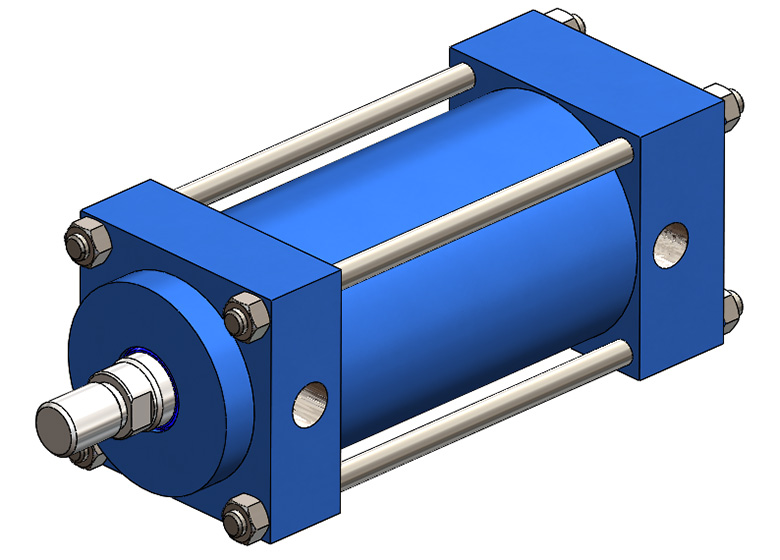
A pneumatic cylinder is a component which carries out linear movements, through which forces are transferred.
The maximum possible pneumatic cylinder foce F is depended on the maximum pressure p and effective area A:
Types
Due to their function, it is possible to categorise pneumatic cylinder into two groups:
- Single acting cylinders;
- Double acting cylinders.
Single acting cylinders
Single acting pneumatic cylinders can only exept force in one direction. The piston can be returned by:
- spring,
- through the weight of the piston itself,
- the action on external force.
Single acting pneumatic cylinders have one effective area.
In single acting pneumatic cylinders only pushing forces may be transferred.
Pneumatic cylinders with spring returns
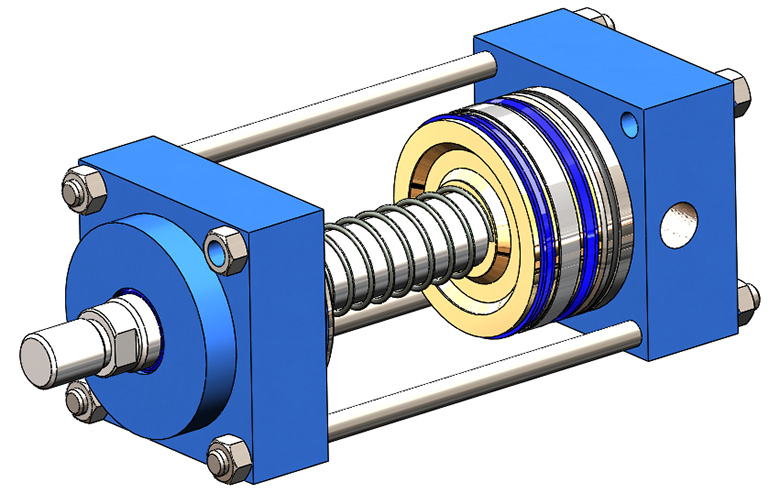
Pneumatic cylinders with spring returns are used in applications where am external, restoring force does not exit. Return springs may be situated either within the pneumatic cylinders or mounted onto the cylinder as a separate component.
Plunger pneumatic cylinders
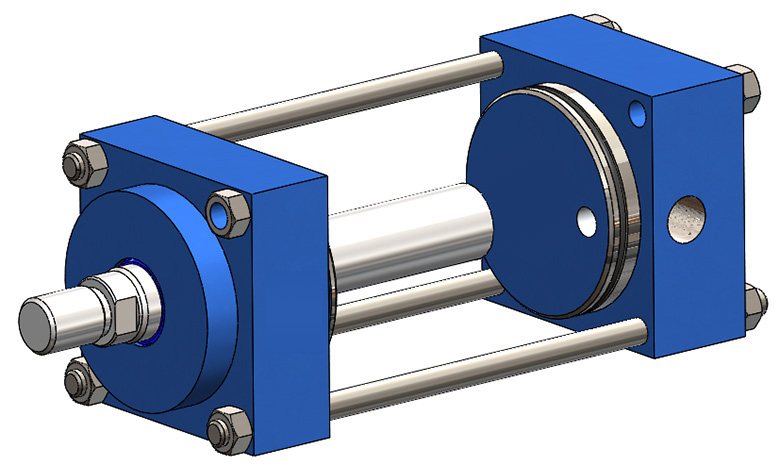
Plunger cylinder is single acting cylinder. Plunger cylinders may be designed with or without an internal stroke limiter.
Double acting pneumatic cylinders
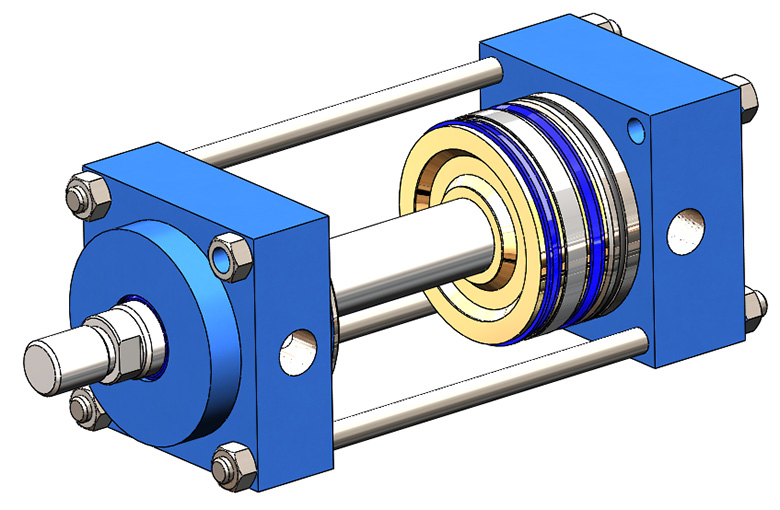
Double acting pneumatic cylinders have two opposing effective areas which are of the same (double rod cylinders) or different sizes (single rod cylinders).
They are fitted with two pipe ports which are isolated from each other.
Single rod cylinder designed
Single rod have a piston, which is connected rigidly to a piston rod which has a diameter smaller than that of the piston. In these pneumatic cylinders the sizes of the effective areas are different.
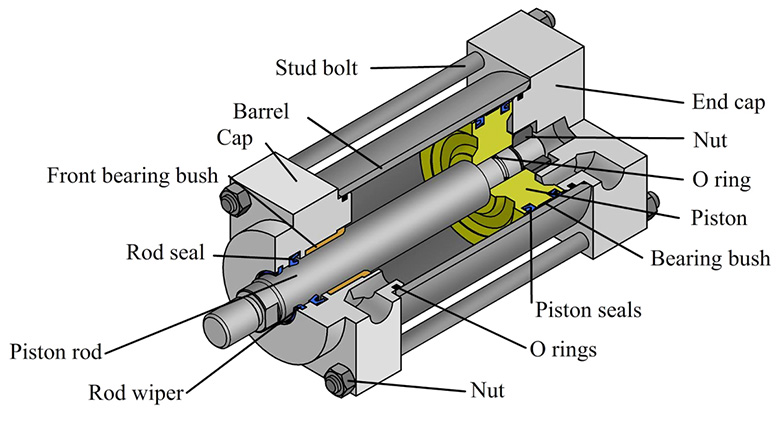
The maximum amount of force transferred is dependent on the effective area as cylinder is extended, othe annulus area as the cylinder is retracted and on the maximum pressure.
The forces are proportional to the areas.
- Large area - high force;
- Small area - low force.
The stroke velocities are inversely proportional to the areas.
- Large area - slow movement;
- Small area - quick movement.